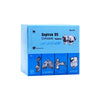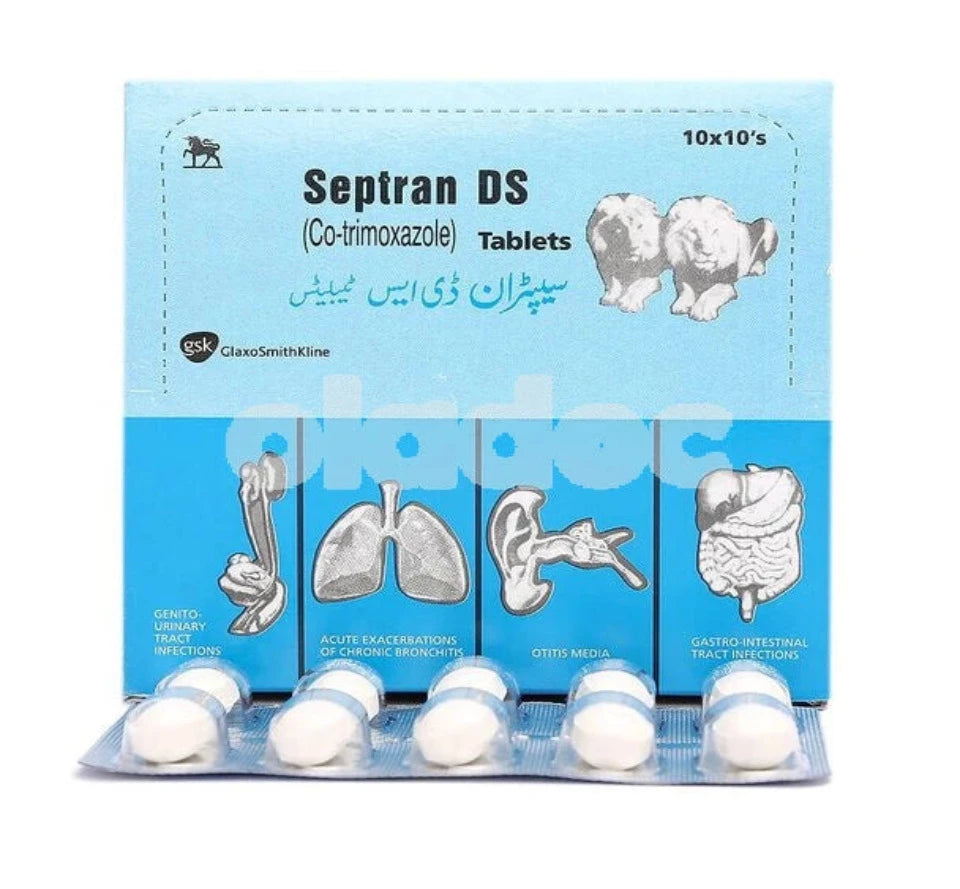Description
Description
SPECIFICATION
80/400Mg
Generics
Sulfamethoxazole,Trimethoprim
About
Sulfamethoxazole competitively inhibits the utilisation of para-aminobenzoic acid in the synthesis of dihydrofolate by the bacterial cell resulting in bacteriostasis. Trimethoprim reversibly inhibits bacterial dihydrofolate reductase (DHFR), an enzyme active in the folate metabolic pathway converting dihydrofolate to tetrahydrofolate. Depending on the conditions the effect may be bactericidal. Thus trimethoprim and sulfamethoxazole block two consecutive steps in the biosynthesis of purines and therefore nucleic acids essential to many bacteria. This action produces marked potentiation of activity in vitro between the two agents. Trimethoprim binds to plasmodial DHFR but less tightly than to the bacterial enzyme. Its affinity for mammalian DHFR is some 50,000 times less than for the corresponding bacterial enzyme.
Indication
It is used treat or prevent infections that are proven or strongly suspected to be caused by susceptible bacteria.
Side Effects
- Sensitivity to sunlight - you may get a skin rash, itching, redness or severe sunburn when out in sunlight or after using a sun bed (Photosensitivity reaction) • Increased pressure in the skull (severe headaches, blurred and/or double vision, blind spots, permanent loss of vision) (Peripheral oedema) • Headache • Low blood pressure (Hypotension) • Nausea/vomiting • Rashes (consisting of flat or raised red, brown or pink lesions) • Inflammation of small blood vessels (Henoch-Schonlein purpura) • Hives (Urticaria) • Increased heart rate (Tachycardia) • Shortness of breath or breathlessness (Dyspnoea) • Blood disorders (symptoms may include tiredness, weakness, easy bruising or susceptibility to infection) • The Jarisch-Herxheimer reaction which causes fever, chills, headache, muscle pain and skin rash that is usually self-limiting. This occurs shortly after starting doxycycline treatment for infections with spirochete such as Lyme disease. • Porphyria (sensitivity of the skin to sunlight, inflammation of nerves and stomach pains) • Discolouration of thyroid tissue (does not affect thyroid function) • Decreased appetite • Bulging fontanelles (soft spot on head) of infants • Anxiety • Flushing • Pancreatitis (manifested by severe upper abdominal pain).
Drug Interactions
Thiazides , warfarin , Zidovudine , Cyclosporin , Rifampicin , Pyrimethamine , Phenytoin , Digoxin , Methotrexate , Lamivudine , Repaglinide , Folinic acid , Azathioprine .
When not to Use
It is contraindicated in patients with a known hypersensitivity to trimethoprim or sulfonamides and in patients with documented megaloblastic anemia due to folate deficiency. It is also contraindicated in pregnant patients at term and in nursing mothers, because sulfonamides pass the placenta and are excreted in the milk and may cause kernicterus. It is contraindicated in pediatric patients less than 2 months of age.
Precaution
In the absence of a proven or strongly suspected bacterial infection or a prophylactic indication is unlikely to provide benefit to the patient and increases the risk of the development of drug-resistant bacteria.



